How do you drive traffic to your site? Most people do it by focusing only on search engine optimization. Then, they wonder why they’re not getting a significant boost in search traffic and rankings.
The truth of the matter is that SEO takes time to produce results. Consequently, you have to use additional methods, like social media, word of mouth, press releases, blog posts, and so on, to keep driving search engine traffic your way
When it comes to social media marketing, the social network LinkedIn drives the most engaged visitors to my blog. In fact, when I increased my LinkedIn engagement by 386%, my social media traffic almost doubled.
Increasing referral traffic is a lot harder for a beginner than it is for an authority blogger. But it’s not impossible.
That’s why I wrote this in-depth post: to help you build momentum for your site, drive organic traffic without ranking highly in Google, discover new traffic sources, and improve your personal brand.
Time is a finite, precious resource. So, if you want outstanding results for your online business, you have to stay focused.
Sites, like growthhackers.com and others, can increase your referral traffic. We’re going to discuss, in detail, how to accomplish that, with specific examples of marketers who have benefited from referral traffic.
So, if you want to grow your referral traffic, you should consider following the steps below. They work so well that I’ve been able to increase my referral traffic by 77%, in 90 days, by executing these same steps.
Step #1: Guest blog on industry blogs
We all know that publishing valuable content is one of the most effective ways to score attention from search engines.
But what about publishing content off your website to drive more website traffic your way?
I’ve achieved tremendous success with guest blogging. Trust me, most of the people who claim that guest blogging doesn’t work haven’t really been doing it – or at least haven’t been doing it correctly. However, if you want it to work, you’ve got to guest blog on the right blogs.
You can still build quality links through guest blogging, when you focus on user intent and build only links that will enhance the user’s experience. The thing that I love about guest blogging is that you’ll start generating tremendous search traffic through long-tail keywords.
If you want guest blogging to work for you, there are a few rules to keep in mind:
So, how do you find the right blogs to pitch your guest post idea to? Start with Google and dive deep.
Here’s how to do it: Enter your main keyword (e.g. social media strategies) + “submit guest post” or one of the following phrases, in quotation marks:
“submission guidelines”
“guest post guidelines”
“submit guest post”
“accepting guest posts”
“contribute an article”
“submit content”
“guest post”
“want to write”
“write for us”
“add a post”
“become a contributor”
“guest post by”
“submit your post”
Generally, you want to identify industry blogs that publish content on topics similar to your own. You can find these blogs at AllTop.com. However, if you’re looking to attract clients, focus instead on blogs that your target audience frequently reads, whether those blogs are in your industry or not.
But, for getting referral traffic, industry blogs should be your primary targets.
Make sure that the blog that you want to write for has a sizable audience of active, enthusiastic and responsive readers. I
Another simple, but effective way to find authority blogs for your guest post and to drive referral traffic is to search for sites a popular blogger has contributed to in the past. I use this strategy frequently and it works better than any other strategy or tool that I’ve ever used.
Remember that guest blogging everywhere may not drive significant referral traffic for you. Instead, you’ve got to map out a pitching strategy that will get the A-list and high-traffic blogs to say “yes.”
Also, you can build your personal brand faster, increase the trust that readers have in you and increase search traffic by writing well-researched and data-driven guest articles.
Once your guest article has been published, actively respond to comments and promote the hell out of the content, to drive more visitors and readers to your site.
Step #2: Leverage local partner sites
You can get people to visit your site by leveraging local partner sites. But, you can also improve your results by stepping away from your site and building relationships offline.
As a content marketer, you can partner in several ways with companies and marketers in your locality:
Sponsor local events: You’ve got very little to lose by sponsoring a local event with a few hundred bucks. If the event is highly targeted, you can expect qualified visitors to your site. You should always stay updated on local events so that when you find a scheduled event with the right audience, you can quickly get on board as a sponsor.
Speak at local events: If you don’t have the budget to sponsor an event, see if you can become a presenter at one. Speaking at over 250 conferences (and more each year) has given me a solid advantage in building my brand.
Connecting with people one-on-one can help you to stand out from the hype that’s prevalent in the blogging and internet marketing space.
If you’re fairly new to public speaking, you should start with local events. You may opt to volunteer your speaking services for free, just to get your name out there. Eventually, you’ll become the go-to expert in your industry and start making money from both referral traffic and speaking fees.
Step #3: Strategically comment on blogs
Make no mistake: Commenting on blogs is a strategy that works.
In my early days of consulting, I commented on hundreds of posts. Those comments referred 3,973 visitors and six qualified leads to my consulting business. I was even able to close a $25,000 corporate speaking gig, after commenting on a blog.
Most blog owners use the comments metric to measure the engagement that their content generates. It may not be the most valuable metric you can track, but it indirectly tells you much about your users, your content and your strategy.
According to Torque Magazine, somewhere around 5.5 billion comments are left on WordPress blogs, every single month. Many of those are spam comments, of course, and, thankfully, the Akismet plugin prevents spam comments from destroying a blogger’s hard work.
Writing comments on blogs can increase your referral traffic if you learn how to do it properly.
Before I show you how to do it, here’s a quick history of blogging:
When blogging started in the 1990s, as a form of online journaling, people began to share their opinions and build communities around interests. At the time, most bloggers were doing it out of sheer passion for what they loved. They defined digital success as people reading their blogs.
Unfortunately, passion was also the reason many early bloggers didn’t bother to register a domain name and get a professional hosting provider for their blogs.
They preferred to use blogger.com (which gives you yourname.blogspot.com) or WordPress.com (yoursite.wordpress.com). Using these solutions was free, but it meant that bloggers weren’t in control of their blogs.
Though there are still some free blogs with active communities, most bloggers understand that having total control over your content, much like taking control over your life, is the best way to go.
Today, blogging is a powerful way to acquire more customers and grow your revenue. For example, Pete Cashmore started Mashable at the age of 19. And, within 18 months, he grew it to two million monthly readers. I
Blogging was also the key traffic and leads driver for Mint, an accounting solution. Within two years, Mint grew to 1.5 million users and sold for $170 million.
And, when you are in total control of your blog, you can – and should – strategically monitor the comments and use them to build engagement, relationships, and trust with your target audience.
Now that you know the importance of having total control over your blog and the impact it can have for you, let’s discuss strategic blog commenting.
How do you drive referral traffic by leaving comments on real blogs? (By “real blogs,” I mean blogs where the owner/author has full control.)
First and foremost, being strategic at commenting means having a solid plan in place. A good strategic plan helps you to pinpoint the right blogs to comment, measure how authoritative the blogs are and gauge how responsive the readers are to comments. Do users also read the comments left by others? Does the blog owner respond to comments as well? If there is no response, they also won’t click your link or convey the approval of it to others.
I reply to the majority of my comments, especially when they’re useful or when the comment asks a question:
The purpose of this section is to show you examples of the strategic approach to writing blog comments that will drive referral traffic to your site.
Commit to sticking to it for about 90 days and watch how much referral and search traffic it’ll generate for your site.
That being said, let’s quickly look at some other aspects of blog comments that can help you increase referral traffic:
Understand blog commenting that works: If getting referral traffic is your goal, focus on value. Giving value is the bedrock and lifeblood of content marketing.
You may have read several blog posts teaching you new marketing tricks. But, if a post doesn’t resonate with quality and service, nothing else matters.
Make sure that you study the blog, before writing a comment. Before you comment on any post, take some time to learn about the community, how comments are structured and whether or not the blog owner allows links within the body of the comment (most of them do not).
Understanding really is the intersection between revelation and listening. In other words, you read what the blog author reveals and then listen to (or read) existing comments to gain deeper insight into the post.
You already know that posting everyday generates 4x more leads. You also know 80% of blog visitors are new. So, keep that in mind, when leaving comments.
After all, if a majority of the visitors to any blog are new, it means that your comment has to be highly useful, since no one really knows who you are, yet. But, when your comment is substantive and helpful, people will want to know who you are.
And, they know your real identity by clicking your name and visiting your site.
You also have to understand the words and phrases to use in your comments.
For example, if you’re writing a comment on a search engine optimization blog, mentioning SEO or canonical URLs would be fine – the audience is used to those words.
But, if your niche is consulting to small businesses or you have a blog that caters to nurses, teachers or other non-internet marketing people, the acronym “SEO” and terms like search spiders, meta tags, or Google Hummingbird would seem like jargon to them.
Understand that the average person’s attention span is 8 seconds, which is one second less than that of a goldfish. So, if your comment is going to leave an impact, you’ve got to be strong from the first sentence.
The importance of understanding can never be over-emphasized. Remember that to become a successful content marketer, you’ve got to understand several things very well, including blogging, persuasive copywriting, email marketing (especially email open rates), relationship marketing and so on.
The same rule applies when putting new strategies in place to increase referral traffic. Focus on understanding how comments work first before you dive in.
Of course, it takes time to master anything and there are always new things to learn – but keep at it and you’ll build a successful online business.
Find high-traffic dofollow & Commentluv blogs: Your goal is to drive traffic, but why not also get some quality dofollow links in the process?
That’s why you should look for dofollow blogs (blogs that pass value/juice to your links) so that you can easily kill two birds (traffic and link) with one stone. In order to achieve that, you’ve got to find high-traffic dofollow blogs that have installed and activated the Commentluv plugin.
The plugin calls your recent blog posts, once you add your blog URL in the appropriate box, before leaving a comment.
To save time and start commenting right away, several bloggers have done all of the hard work of identifying the dofollow blogs for you. Some of the authority blogs are:
- Searchenginejournal.com
- Problogger.net
- Btemplates.com
- Alltop.com
- Tripit.com
- Japantoday.com
- Socialtimes.com
- Globeofblogs.com
- Host.madison.com
- Blogtoplist.com
- Missoulian.com
- Blog-directory.org
- Weblogtoolscollection.com
- Interactiondesign.sva.edu
- W3blog.dk
- Intenseblog.com
- Jiscdigitalmedia.ac.uk/blog
- Links.org.au
- Gazettetimes.com
- Helenair.com
- Wiscnews.com
- Uwesu.org
- Finweb.com
Stay updated and comment early: If you can comment soon after a post is published, you’ll generate more referral traffic from top sources.
Commenting early doesn’t guarantee success. Being the first person means that you’ve got an opportunity to write a kick-ass comment that will dazzle both the writer and other readers.
Referral traffic elements, such as a high-converting landing page, a strong call-to-action, and high-quality content, must all be in place, to help your comment stand out and win.
Once you have those elements in place, you can use several referral programs to drive traffic to your site. It doesn’t matter how long your site has been up – you can make a difference by reaching out beyond your immediate sphere of contact.
Growing a profitable site isn’t for lazy bloggers or content marketers – it takes lots of hard work and creative thinking to nail it.
The best way to ensure that you’re the first commenter on a high-traffic blog is to subscribe to their list.
For example, if you’re subscribed to Quicksprout.com’s blog, you’ll get an email notification each time I publish a new blog post.
So, how do you become the first person to comment on a high-traffic authority blog, the moment a new blog post is published? Simple: Subscribe to the email list. You may want to set up a new Gmail account because you’ll have to opt-in to five or more authority blogs.
When leaving comments, make them useful for fellow commenters as well. Your comment should be safe for the blog, not posing a penalty risk for them.
After opening a new Gmail account, go over to the blog that you want to receive updates from and opt-in.
Set up relevant landing pages: Earlier, I mentioned that one of the elements that will help you get referral traffic is a high-converting landing page. You can follow the perfect landing page template, to ensure that every element is distinct and relevant to help persuade site visitors to take action.
The above template helps you to position your value proposition to align with the rest of the copy elements. And, there’s more:
That’s your hub for connecting, building your email list and nurturing a captive audience.
Too many bloggers make the mistake of just linking to their blog homepage when they write comments. Instead, get specific – and creative – with your landing pages.
You’ve got to write a strong headline, subheadlines and bullet points. And, your copy should be relevant to visitors who will be coming from the comment that you left on a blog.
Following a proven template is a good start, but exercise some creativity, too. The rules are not set in stone.
You want to ensure that each of the requisite elements is there so that your comment and referral visitors from various sources will arrive at the right webpage that’s full of relevant information for them.
Specific pages are suitable for different comments.
For example, if you leave a comment on a post about saving money, it’d make sense to channel all the visitors, who will eventually click your link, to a webpage that gives more information on how to save money.
It could be an overview of personal finance and frugal living or a way to earn more money, so people can buy what they want and stop worrying about saving for retirement or college.
On the other hand, if you link to a web page that talks about WordPress blogging or conversion rates, while your comment was on a post about frugal living, you may succeed at sending visitors to that webpage, but nothing will happen.
Even if you had an opt-in box on that page, very few people would join, because your landing page wasn’t relevant to their needs and interests.
Conversion Lab also has a high-converting landing page, especially with the picture of the author for visual appeal. The human brain processes images 60,000x faster than plain text.
With the right landing page and a clear strategy, you’re sure to get more engagement and referral traffic from comments.
On a side note, remember that links from comments may get you penalized if you go about spamming every blog out there with “great post” or “really nice” kind of comments.
Google has made it clear, time and time again, that unnatural links are dead. Your duty as a site owner is to stick with what works.
So, if you were to choose between leaving a comment on an industry blog or guest blogging, I’m sure you know which to choose? Guest blogging, of course!
Step #4: Create ego-bait content
When it comes to self-esteem, you’ve got lots of entrepreneurs to connect with and they’d love to have you feature them. Even mentioning someone’s new product could get you an inbound link.
Einstein clearly defined ego, to help you pursue the right course, no matter what your industry may be. His formula points to the fact that the people who exhibit excess ego don’t necessarily have much knowledge in their field.
This is the reason why most successful bloggers and content marketers don’t flaunt their ego that much – but many beginners do.
For our purposes, ego bait drives web traffic and builds strong relationships with others, especially when you target authors, writers, and bloggers from the same industry.
The purpose of creating ego-bait content is to write about other people in a way that serves them and your readers and generates editorial links that improve your search traffic and rankings in the process.
In his book, E-go: Ego Distancing Through Mindfulness, Emotional Intelligence and the Language of Love, Taite Adams shares powerful lessons and well-researched studies that will help you distance unwarranted egos from ruining your life. Yes, ego can play a good or bad role – depending on how you use it.
All in all, you can capitalize on people’s egos to build your blog – not in a deceptive way, but by promoting them honestly and rewarding them richly. There is no manipulation or trick here – it’s pure content marketing (giving value and attracting the right people to your business).
Follow the tips below and you’ll be ready to start getting referral traffic, quality inbound links and brand exposure for your site, through ego bait.
Find linkable ideas and topics: In his book, Ideas Rule the World, Sam Adeyemi expanded on the need to give new ideas a chance in your life. If things aren’t working out for you, you need an idea, before you can make a change – not money or people.
If you can find the right idea, you’ll ultimately earn attention and your target audience will take notice. Taking action on the idea is what makes the difference – but you’ve got to find that idea first.
In the same vein, a powerful idea or an old idea that’s presented in a clever manner can reshape a piece of content and cause it to go viral.
The best-known version of ego-bait content is the expert roundup. This is the type of blog post where you interview other bloggers, link to their best posts/products and send emails to let them know about the mention.
The proven strategy that I use, when looking for ideas and topics for my expert roundups, is to look at headlines that have gone viral in my industry. Once I have a list, I then play off of the titles to create several of my own headlines.
Now, let’s create some headlines for a viable expert roundup article:
- 30 Expert Bloggers Reveal Their Writing Strategies for Coming Up With 50 Topic Ideas in 30 Minutes
- 25 Authority Bloggers Reveal How They Generate 50 Topic Ideas in 30 Minutes
- Top 10 Sources to Get 50 Topic Ideas Revealed by 30 Content Marketers
- 9 Social Media Stares Weigh in On Their Top Twitter Moments
- 11 Search Engine Optimization Experts on Boosting Direct Traffic
Each of the headlines above will highlight the work of several writers, whom you can link to and notify about the published post later – perhaps they’ll link back to the post that is already on your blog, as well as send referral traffic to your site.
Powerful quotes never die. You probably remember the quotes of Martin Luther King Jr., Abraham Lincoln, Steve Jobs and other authorities. Though these personalities are long gone, their quotes remain.
Build relationships with A-list bloggers: Life is about connecting with other people and helping them. In the same vein, both blogging and building a successful business are about solving problems for others.
This was how Richard Branson started and grew his multi-billion dollar Virgin Group – by networking with others and learning along the way. You can, too, if you dare to connect with and help authority bloggers in your industry.
Along the same lines as building relationships with A-list bloggers, you want to connect with social media influencers on Twitter, Facebook, and LinkedIn. Follow them. Become their friend and start communicating with them regularly.
Don’t be scared to talk to an expert. Richard Branson says that you should be brave. The timid content marketer goes nowhere.
The closer you are to them, the more they’re willing to share your next blog post with their fans and readers.
Remember that successful networking and relationship building boils down to the quality and usefulness of the content that you provide. If you’re the type who doesn’t give adequate time to research, strategic writing and marketing, no authority blogger will want to associate with you.
Trust me, A-list bloggers want to grow. It shouldn’t surprise you to hear that from me. Considering the level of success that I’ve achieved, I’m not satisfied yet. I want to attract new clients and retain old ones.
That inherent desire to always want more was orchestrated by nature – at least, that’s what I believe. Some of the ways that you can help an authority blogger/content marketer grow include sharing their links on Twitter, citing their blog posts on your blog and buying their products.
Step #5: Get active on social media networks
In this modern era, your presence on social networks is absolutely vital to your success.
Why? For one, it can help you build authority.
According to The SITS Girls, becoming an authority is a choice, not an appointment. This applies to everything you do. Whether it’s blogging or social media, timing is important. This stat shows that 70% of users read blogs in the morning and that more men read blogs at night than women.
Marketing statistics from HubSpot found that 83% of marketers indicate that social media is a key marketing platform for their business. If you want more referral traffic to your site, choose to get active on social media networks.
Social media marketing is powerful. Investing your resources in understanding how it works can help you get the best results.
You’ll double your referral traffic and leads when you start reaching your target audience on different platforms. This means that you should optimize your landing pages and site so that they appear well on each platform and/or device. Remember, Google says mobile-friendliness is now a ranking factor.
In other words, if your site isn’t displaying properly on different mobile and handheld devices, your chances of getting organic referral visitors are slim. Therefore, make your site responsive and understand that content is like water.
Understand social timing: What’s the best time to tweet or share on Facebook or LinkedIn? What about pinning to your Pinterest board – is there any perfect time that’s been proven to work?
Well-researched user data shows that the perfect time to post on Facebook is 1:00 PM if you want the most shares and 3:00 PM if you want to get more clicks.
Social timing is where the result is. Most marketers who aren’t getting significant social traffic have made a timing mistake, by posting new content at any time of the day and wonder why nothing is happening.
When it comes to social media marketing – the kind that drives traffic and leads – you can’t ignore timing. Take a look at the perfect time to tweet and engage your Twitter followers.
Since visual marketing is superior to plain text, in terms of engagement and social shares, use Saturday to pin images to your board, sometime between the hours of 8.00 – 11.00 PM.
To learn more about the best timing for Instagram, LinkedIn, etc., read this: “What Are The Best Times To Post On Social Media?”
Conclusion
There is no perfect time to increase referral traffic to your blog but content marketing is one of the best strategies to ensure that your efforts aren’t wasted. From guest blogging to boosting your presence on social networks, you have a number of methods for driving website traffic your way. Persistence is key; knowledge essential.
Every now and then, I write an in-depth post that shows you the step-by-step guide for achieving a particular marketing goal – which would, in turn, position your site to receive more website traffic, even when you’re not actively building links.
All of the traffic hacks that I’ve discussed here aren’t going to bring overnight results. It may happen, but there is no guarantee and it will certainly take time and effort.
Whether you’re a part-time content marketer or working full-time, you’ve got to stick to it. As you continually create high-quality content, you’ll generate more leads.
You want referral traffic, but your target audience wants useful content that will give them a sense of hope and relief. Spend time with each blog post you publish to ensure that it meets these goals. Putting the user first is one of the most gratifying ways to drive website traffic. And when that traffic comes your way, keep your reader engaged.
What are the best tactics that you’ve used to increase referral traffic to your site within a specified period of time?

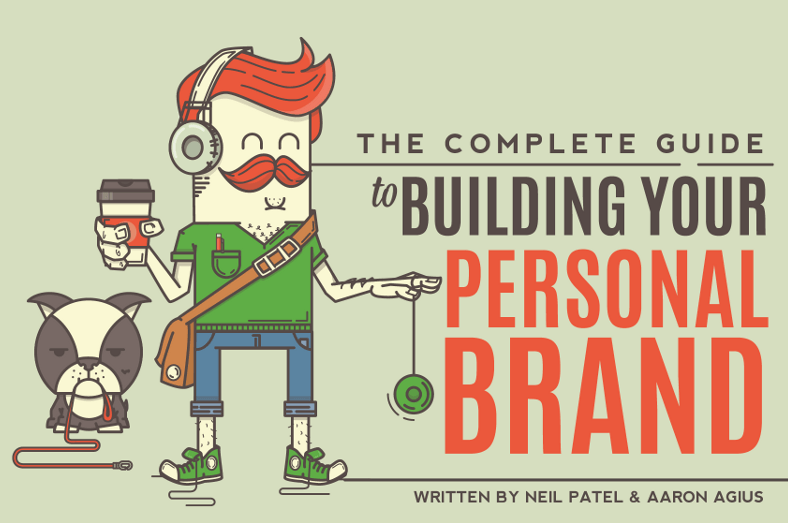









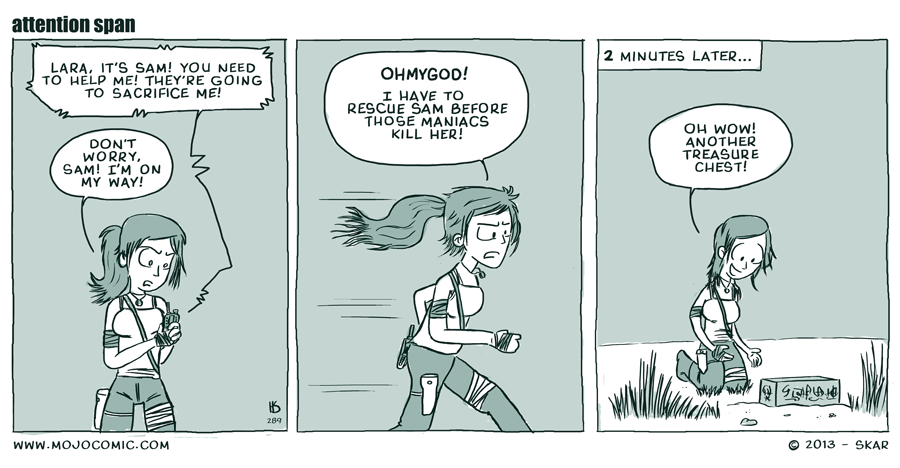

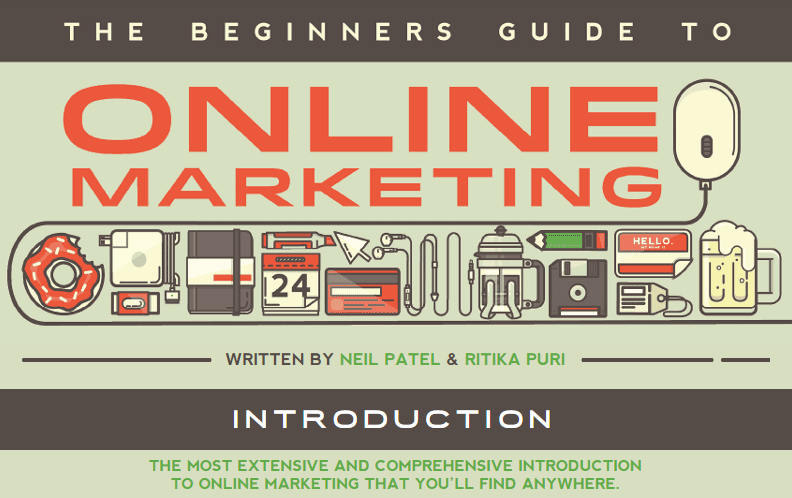

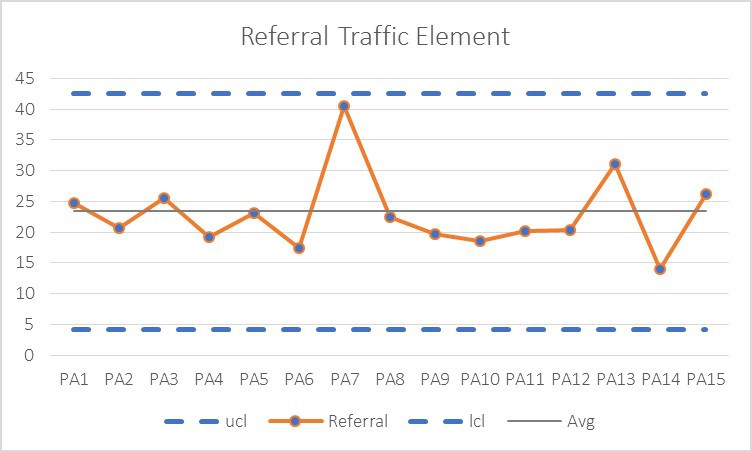



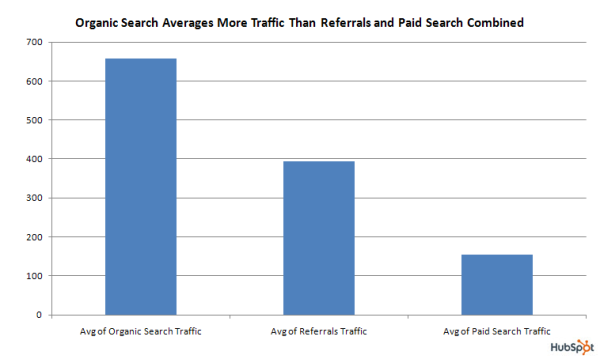








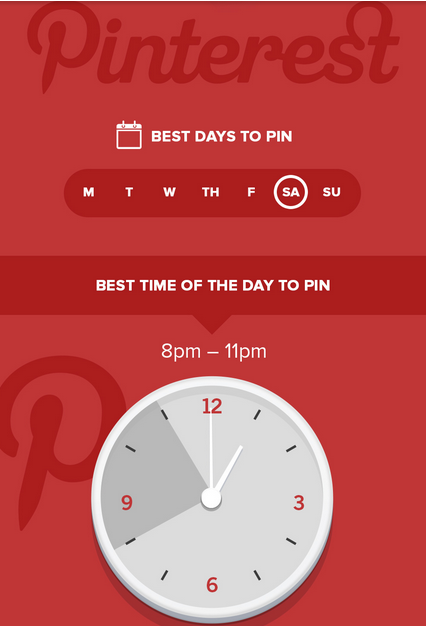

Comments (202)